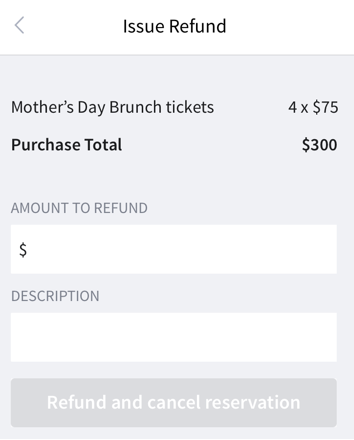Selling tickets for special dining experiences
As popular and exlusive restaurants like French Laundry and Lazy Bear were moving to pre-paid ticketed dining experiences, OpenTable was losing customers to new competitors like Tock and Resy. Even restaurants who used OpenTable for most reservations were turning to our competitors just for the nights where they hosted special dining events because OpenTable didn't offer a better solution. Our team set out to build an MVP add-on product to our GuestCenter platform for pre-paid ticketed experiences for restaurants and diners.
Restaurant research
We knew there was a product need because restaurants were going to our competitors, but we first wanted to understand a restaurants motivations for requiring pre-paid tickets for meals. My team of two product managers, a researcher, and I visited 12 restaurants in SF and DC to talk with owners and General Managers.
Insights
- Restaurants felt like they have to be a certain caliber of restaurant to require 24/7 ticketing (like a French Laundry). Tickets for special events weren't as exclusive.
- Requiring a pre-paid ticket takes out the risk of special event menus.
- Special events are a way to bring in new diners to expand their normal dinner clientele.
Strategy
We identified 4 key areas that need to be addressed to fully solve the market need for ticketed events, and worked with our marketing partners to understand the market size.We decided to focus our beta product on the problem of special ticketed events for the entire restaurant because we could make the biggest impact with the least effort.
What did we need to build?
Restaurants need to be able to create an event
Diners need to be able to find events, and buy a ticket
Restaurants need to be able to book reservations over the phone, manage reservations, and check-in guests when they arrive
Prototyping and testing
My co-designer and I worked together to create InVision prototypes to test with diners and restaurants.
Diner insights
- Cancellation window makes a difference in willingness to purchase.
- Before committing, diners wanted to know all details of the menu.
Restaurant insights
- Restaurant owners wanted more more customization in how they shared their menu.
- They thought about refunds in a % amount rather than $.
Building the beta
A fluid team of consumer and restaurant engineers came togther to join product and design to build the beta in 2.5 months. During this time, product and marketing were recruiting 26 restaurants to join the beta program.
Results
- Signed up 26 restaurants in SF, LA, DC and Philadelphia
- 21 events were held at 11 of the restaurants
- Sold over 30K in tickets
What we learned
- Restaurants want to control the branding - it needs to feel like their restaurant
- Hypothesis that diners are turned away by the high-all inclusive price (Rather than adding on service fee/tax at end)










